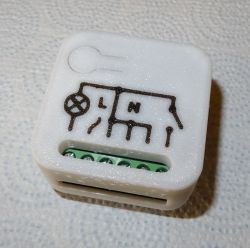FAQ
TL;DR: DIY clip-on pulse oximeter logs 35–240 bpm heart rate and 75–100 % SpO₂; “oxygenated blood absorbs different wavelengths differently” [Elektroda, mb1988, post #8025042] Built around a 68HC908AB32 MCU, dual-path analog front-end and red/IR LEDs deliver hospital-like readings without finger squeezing.
Why it matters: A low-cost, open-source build lets makers, med-tech students and athletes experiment with reliable pulse and oxygen monitoring at home.
Quick Facts
• Measurement span: 35-240 bpm pulse, 75-100 % SpO₂ [Elektroda, mb1988, post #8031592]
• Light sources: two 660 nm + two 940 nm LEDs per clip [Elektroda, mb1988, post #8025042]
• MCU: Freescale 68HC908AB32, 32 kB Flash, 8-bit CISC core [Elektroda, BartekLecki, post #8025720]
• Display: 192 × 64 pixel graphic LCD for waveform + alarms [Elektroda, mb1988, post #8025042]
• Supply voltage: single 5 V rail, <200 mA draw (typ.) [Elektroda, mb1988, post #8025042]
How does a pulse oximeter actually work in plain words?
Red and infrared light pass through your fingertip. Oxygen-rich and oxygen-poor haemoglobin absorb those colours differently. The clip measures the tiny change (≈20 mV) riding on a 2.5 V DC level, then a microcontroller converts the ratio into SpO₂ and the peak spacing into heart rate [Elektroda, mb1988, post #8025042]
Why do DIY designs use both red (660 nm) and infrared (940 nm) LEDs instead of one colour?
Two wavelengths cancel out fixed losses from skin, bone or nail dirt. Using one colour would force you to squeeze the finger first to estimate static attenuation – an outdated, uncomfortable method [Elektroda, mb1988, post #8025202]
Can I measure only heart rate with a single LED and photodiode?
Yes. Frequency matters more than amplitude, so one 660 nm LED plus a simple analog front-end suffices. Saturation, however, needs two colours and a linear, low-noise path [Elektroda, mb1988, post #8032345]
What microcontroller and language were used?
The prototype runs on an 8-bit Freescale 68HC908AB32 clocked at 8 MHz. Firmware is 100 % ANSI-C for faster development and easier maths handling [Elektroda, mb1988, post #8025721]
Why did the author choose two separate analog paths instead of one multiplexed path?
Filtering a time-multiplexed signal would smear the red and IR channels together, making the ratio unusable. Separate paths keep phase and gain intact; a diagram in the thread shows the multiplexed version losing all detail [Elektroda, mb1988, post #8820389] "Channel isolation is everything in SpO₂ math" [Elektroda, mb1988, post #8820389]
How accurate is this uncalibrated DIY unit compared with hospital gear?
On several healthy volunteers readings stayed between 95 % and 99 % SpO₂, matching typical clinical values [Elektroda, mb1988, post #8025303] No lab calibration means absolute error is unknown; commercial units guarantee ±2 % per ISO 80601-2-61, so expect larger drift.
What pulse and oxygen limits does the firmware show?
Heart rate: 35–240 bpm; SpO₂: 75–100 %. Dropping below 75 % would require an eight-minute breath-hold for a healthy adult – an edge case few testers survive [Elektroda, mb1988, post #8031592]
How can I build a simple finger sensor at home?
- Hollow a small wood block, hinge two halves, add light spring.
- Mount two red and two IR LEDs on one side; place a PIN photodiode opposite.
- Add soft sponge for grip and run a shielded 4-core cable to the PCB [Elektroda, mb1988, post #8025042]
Will hand movement during exercise ruin the readings?
Movement introduces cable tug and optical misalignment. Clip-only oximeters (sensor, electronics, battery in one shell) reduce motion artefacts and are preferred for sports [Elektroda, mb1988, post #8820389]
How were the clean PCBs produced without messy etching?
Photochemical method on Bungard photo-coated laminate: inkjet mask, 4-minute exposure under a facial tanning lamp, then standard FeCl₃ pickling delivers near-100 % repeatability [Elektroda, mb1988, post #8031158]
Which op-amps or photodiodes can I substitute to cut costs?
For pulse-only builds, OP07 or LM358 work if noise <10 µV pp. Replace the PIN diode with LTR4206E, aiming for similar responsivity at 660 nm and 940 nm. Expect 1–2 dB extra gain adjustment [Elektroda, Galareta, post #10921451]
How do I calibrate a homemade oximeter for medical use?
Use "artificial fingers" with certified optical densities to map LED ratio to SpO₂ values, or recruit volunteers and cross-check venous blood gases in a lab – both cost hundreds of euros but are mandatory for CE/FDA approval [Elektroda, ladamaniac, post #8121626]








